Innovation Newsbriefs
Vol. 25, No.
While transportation stakeholders and the Washington press corps focus on the impending insolvency of the Highway Trust Fund and bemoan the fact that the House-Senate agreement to replenish the Trust Fund provides only short-term funding ($10.8 billion) through May 2015, they are ignoring developments outside the Beltway that go a long way toward compensating for an absence of congressional action on long-term funding. For in fact, individual states, far from sitting idly by, are responding to the fiscal uncertainties in Washington by stepping up and raising additional revenue to meet their transportation needs.
Archive for the ‘National’ Category
States’ Transportation Revenue Initiatives Help to Compensate for an Absence of Congressional Action on Long-Term Funding
Tuesday, July 15th, 2014Rural Connections: Challenges and Opportunities in America’s Heartland
Monday, July 14th, 2014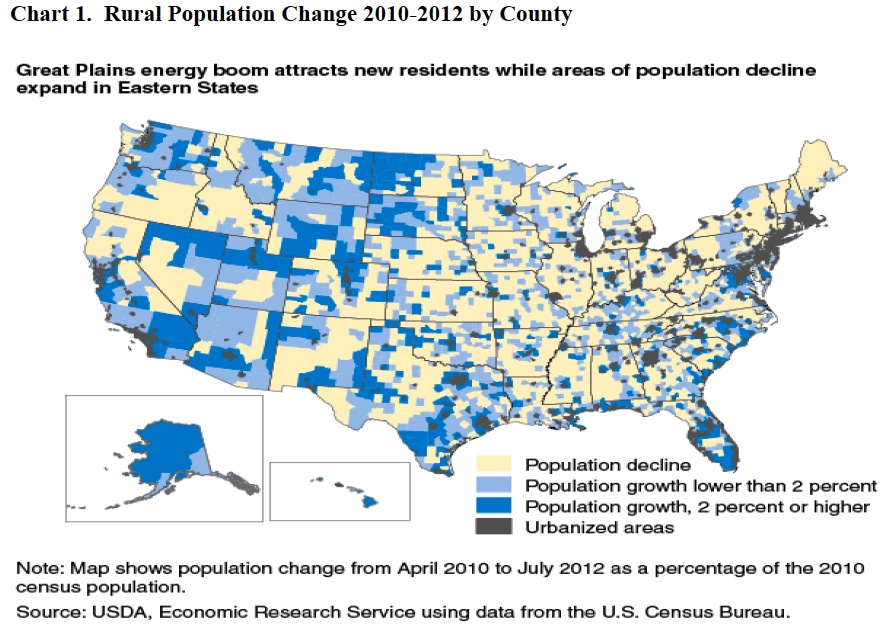
TRIP
America’s rural heartland plays a vital role as home to a significant share of the nation’s population, many of its natural resources and popular tourist destinations, and as the primary source of the energy, food and fiber that supports America’s economy and way of life. The strength of the nation’s rural economy relies greatly on the quality of its transportation system, particularly its roadways, which link rural America with the rest of the U.S. and to markets in other countries. The economy of rural America, which supports the quality of life for the approximately 46 million Americans living in rural areas, rides on the quality and connectivity of the rural transportation system.
AASHTO’s “Nation at a Crossroads” Infographic Calls for Action
Thursday, July 10th, 2014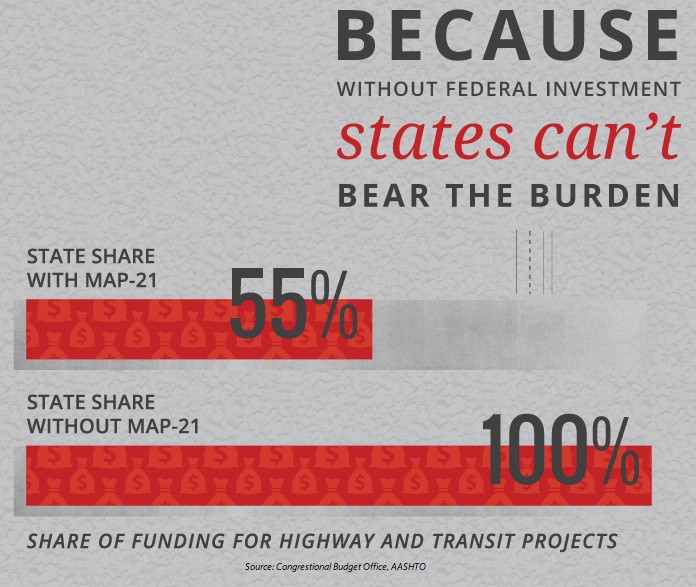
The infographic reveals a slew of alarming facts and predictions centering on the depletion of MAP-21 funding by Fall of 2014, which will lead to states being responsible for 100% of transportation funding. Did you know that, already, 45% of Americans don’t have access to transit? Did you know that 1 in 4 of our bridges is in need of significant repair? While states have come up with some viable funding mechanisms of their own, it’s clearly time for the Fed to step in and replenish this vital source of transportation funding.
View this complete post...Making the Grade: A National Six-Point Plan to Regain America’s Infrastructure Leadership
Tuesday, July 8th, 2014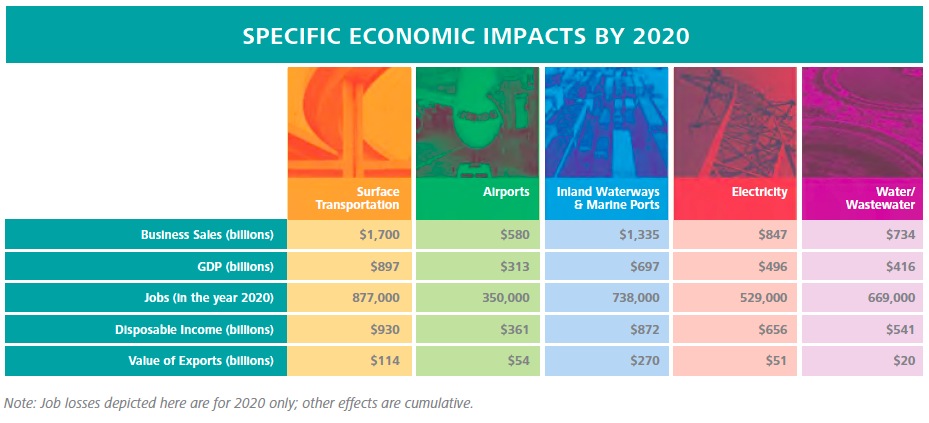
AUTODESK
Making The Grade represents the consensus of many who attended the meeting “Executing a Sustainable Infrastructure Vision” convened by the White House Council on Environmental Quality (CEQ) initially in 2012. The Making the Grade roundtable that followed in 2013 was comprised of experts from 45 companies representing the scope of the U.S. infrastructure industry—planning, engineering, construction, and technology—and their counterparts from local governments, professional organizations, think tanks, financial advisors, academic institutions, and others. Participants agreed to an ambitious goal: describe a new vision and path forward for regaining and sustaining America’s public infrastructure leadership.
Effects of Natural Gas Vehicles and Fuel Prices on Key Transportation Economic Metrics
Monday, July 7th, 2014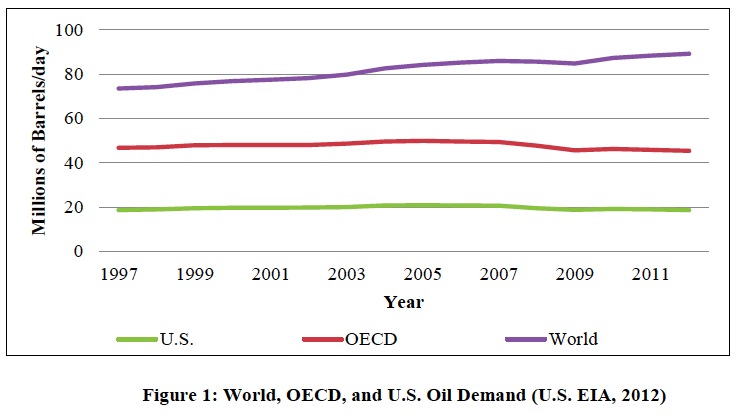
WASHINGTON STATE DEPARTMENT OF TRANSPORTATION
This report responds to an inquiry by the State of Washington about the viability of natural gas as an alternative source of energy for transportation. The report is organized around responses to several key research tasks. These tasks are to: 1) Document the increase in supply of natural gas, estimate future price, and availability; 2) Assess the extent to which natural gas is likely to substitute for petroleum; 3) Estimate the extent to which price and performance effects will influence VMT trends in Washington State; 4) Estimate changes in GHG emissions in Washington State attributable to increased use of natural gas; 5) Estimate potential loss of fuel tax revenue attributable to substitution of natural gas for petroleum fuels.
Lessons from the Green Lanes: Evaluating Protected Bike Lanes in the U.S.
Friday, July 4th, 2014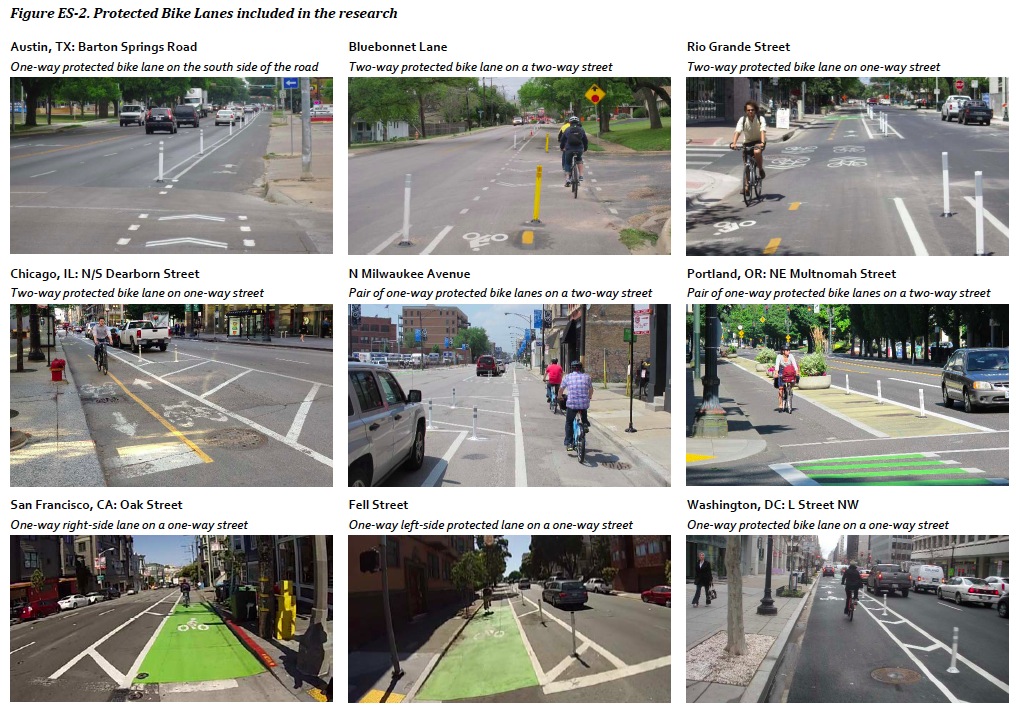
NATIONAL INSTITUTE FOR TRANSPORTATION AND COMMUNITIES
As cities move to increase levels of bicycling for transportation, many practitioners and advocates have promoted the use of protected bike lanes (also known as “cycle tracks” or “protected bikeways”) as an important component in providing high-quality urban infrastructure for cyclists. These on-street lanes provide more space and physical separation between the bike lane and motor vehicle lane compared with traditional striped bike lanes. However, few U.S. cities have direct experiences with their design and operations, in part because of the limited design guidance provided in the past.
Features of a Fully Renewable US Electricity System: Wind and Solar PV
Thursday, July 3rd, 2014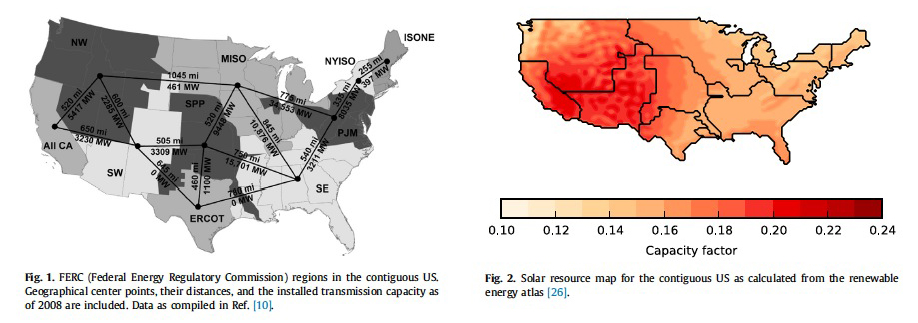
STANFORD UNIVERSITY
DEPARTMENT OF CIVIL AND ENVIRONMENTAL ENGINEERING
CO2 and air pollution emission reduction goals as well as energy security, price stability, and affordability considerations make renewable electricity generation attractive. A highly renewable electricity supply will be based to a large extent on wind and solar photovoltaic (PV) power, since these two resources are both abundant and either relatively inexpensive or rapidly becoming cost competitive. Such a system demands a fundamentally different design approach: While electricity generation was traditionally constructed to be dispatchable in order to follow the demand, wind and solar PV power output is largely determined by weather conditions that are out of human control.
The Highway Trust Fund and Surface Transportation Programs in the Federal Budget
Tuesday, July 1st, 2014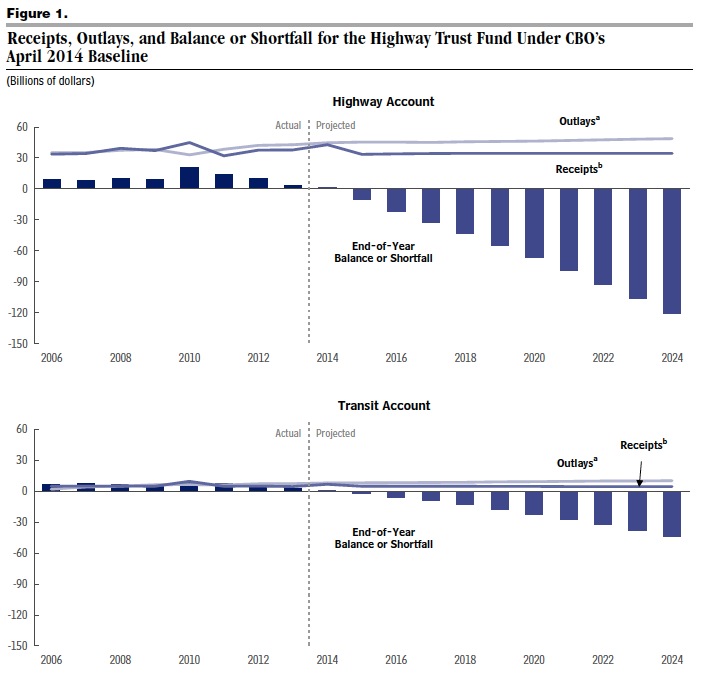
CONGRESSIONAL BUDGET OFFICE
The federal government spends more than $50 billion per year on surface transportation programs, mostly in the form of grants to state and local governments. Much of this spending is for highways and mass transit programs financed through the Highway Trust Fund. Those programs have an unusual treatment in the federal budget, and the way they are classified in the budget facilitates the spending of more money from the trust fund than there are dedicated revenues to support such spending. Those revenues come from excise taxes on the sale of motor fuels, trucks and trailers, and truck tires, and from taxes on the use of certain kinds of vehicles.
Infrastructure Spending in the US: Outlook to 2025
Thursday, June 26th, 2014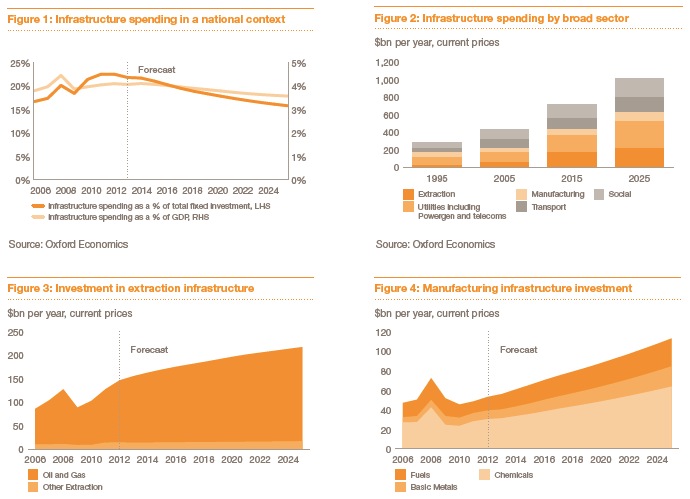
PricewaterhouseCoopers (PwC)
By 2025, annual investment in infrastructure across our sectors in the US should top $1trn, having grown by an average of just over 3.5% a year. But the US will likely have been long since left behind by China, where we expect annual spending will reach over three times this level. We estimate that the US’s share of global spending will likely decline gradually over the coming decade to just over a tenth of total global spending by 2025.
The Water-Energy Nexus: Challenges and Opportunities
Tuesday, June 24th, 2014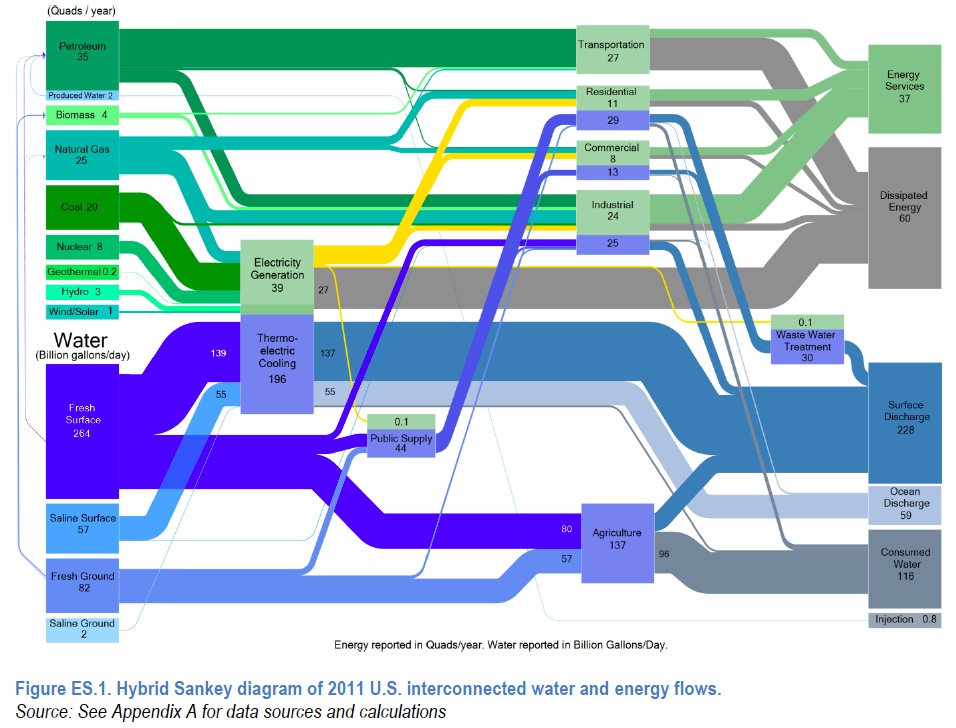
UNITED STATES DEPARTMENT OF ENERGY
Present day water and energy systems are tightly intertwined. Water is used in all phases of energy production and electricity generation. Energy is required to extract, convey, and deliver water of appropriate quality for diverse human uses, and then again to treat wastewaters prior to their return to the environment. Historically, interactions between energy and water have been considered on a regional or technology-by-technology basis. At the national and international levels, energy and water systems have been developed, managed, and regulated independently.
Follow InfrastructureUSA
CATEGORIES
- Accountability (219)
- Aging Infrastructure (757)
- Aviation (130)
- Biking (324)
- Bipartisan (271)
- Bridges (493)
- Broadband (57)
- Buses (160)
- Carbon Tax (22)
- Clean Air (182)
- Climate Change (200)
- Competitiveness (230)
- Congestion (327)
- Dams (77)
- Democrat (123)
- Drinking Water (192)
- Economic Stimulus (276)
- Employment (207)
- Energy (585)
- Environment (615)
- Equity (239)
- Funding (888)
- Global (205)
- Great American Infrastructure (33)
- Green (295)
- Guests on The Infra Blog (288)
- Hazardous Waste (27)
- High Speed Rail (224)
- Highway (785)
- Inland Waterways (204)
- Jobs (251)
- Land Use (99)
- LEED (28)
- Levees (42)
- Local (1,910)
- National (1,526)
- Policy (1,121)
- Pollution (215)
- Private Investment (213)
- Public Opinion (189)
- Public Parks & Recreation (198)
- Public Transportation (1,028)
- Racism (6)
- Rail (504)
- Recession (65)
- Recovery (218)
- Republican (109)
- Roads (1,120)
- Schools (81)
- Seaports (69)
- Smart Grid (98)
- Smart Growth (442)
- Solid Waste (26)
- Sustainability (765)
- Tax (112)
- Technology (397)
- Telecommunications (46)
- Transit (1,333)
- Urban Planning (982)
- Wastewater (182)
- Water Treatment (167)
Video, stills and tales. Share images of the Infra in your community that demands attention. Post your ideas about national Infra issues. Go ahead. Show Us Your Infra! Upload and instantly share your message.
Is the administration moving fast enough on Infra issues? Are Americans prepared to pay more taxes for repairs? Should job creation be the guiding determination? Vote now!
What do the experts think? This is where the nation's public policy organizations, trade associations and think tanks weigh in with analysis on Infra issues. Tell them what you think. Ask questions. Share a different view.
The Infra Blog offers cutting edge perspective on a broad spectrum of Infra topics. Frequent updates and provocative posts highlight hot button topics -- essential ingredients of a national Infra dialogue.
Dear Friends,
It is encouraging to finally see clear signs of federal action to support a comprehensive US infrastructure investment plan.
Now more than ever, our advocacy is needed to keep stakeholders informed and connected, and to hold politicians to their promises to finally fix our nation’s ailing infrastructure.
We have already engaged nearly 280,000 users, and hoping to add many more as interest continues to grow.
We require your support in order to rise to this occasion, to make the most of this opportunity. Please consider making a tax-deductible donation to InfrastructureUSA.org.
Steve Anderson
Managing Director
SteveAnderson@InfrastructureUSA.org
917-940-7125
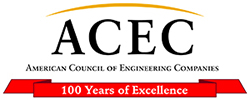
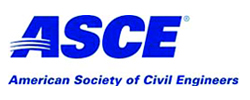






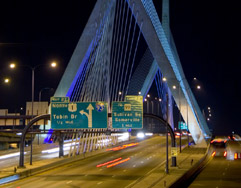
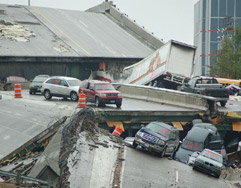
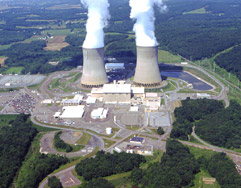
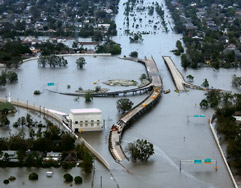

 RSS Feed
RSS Feed